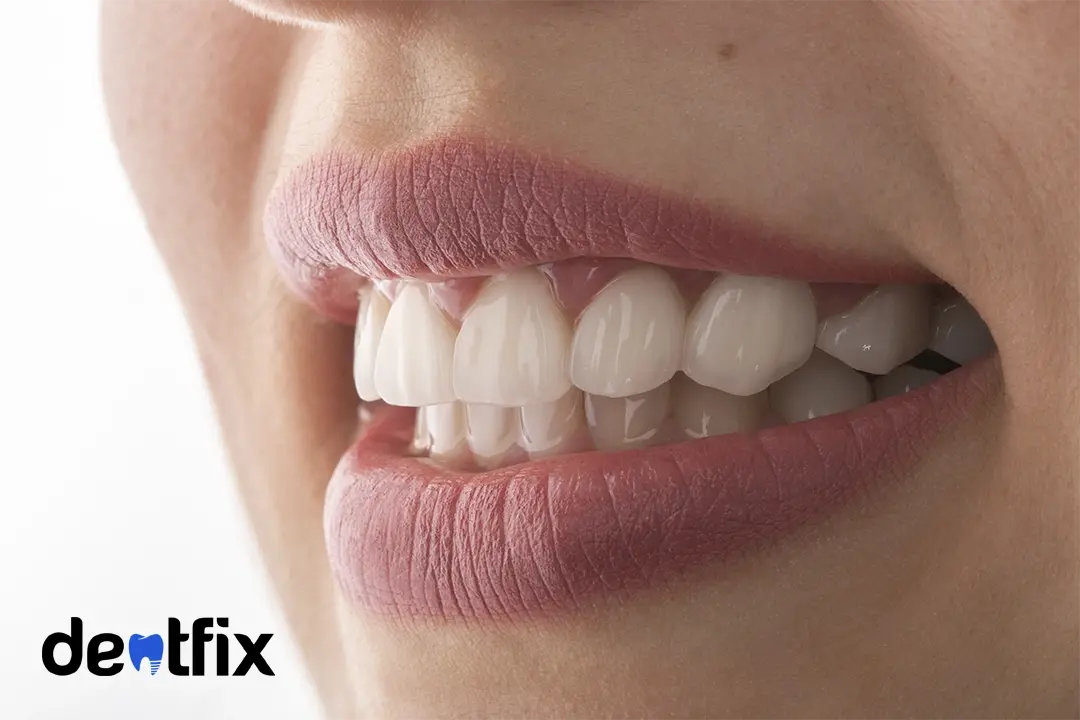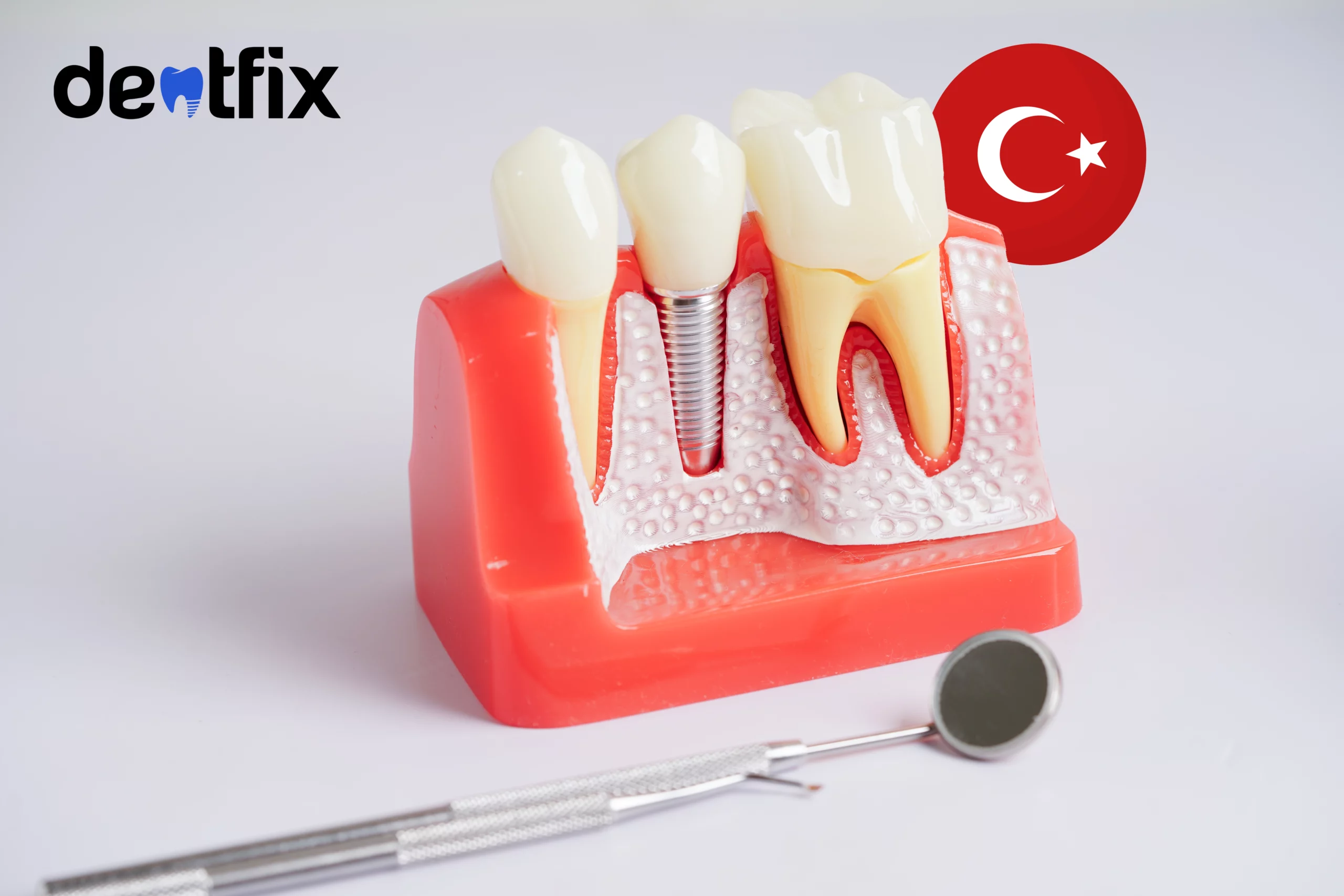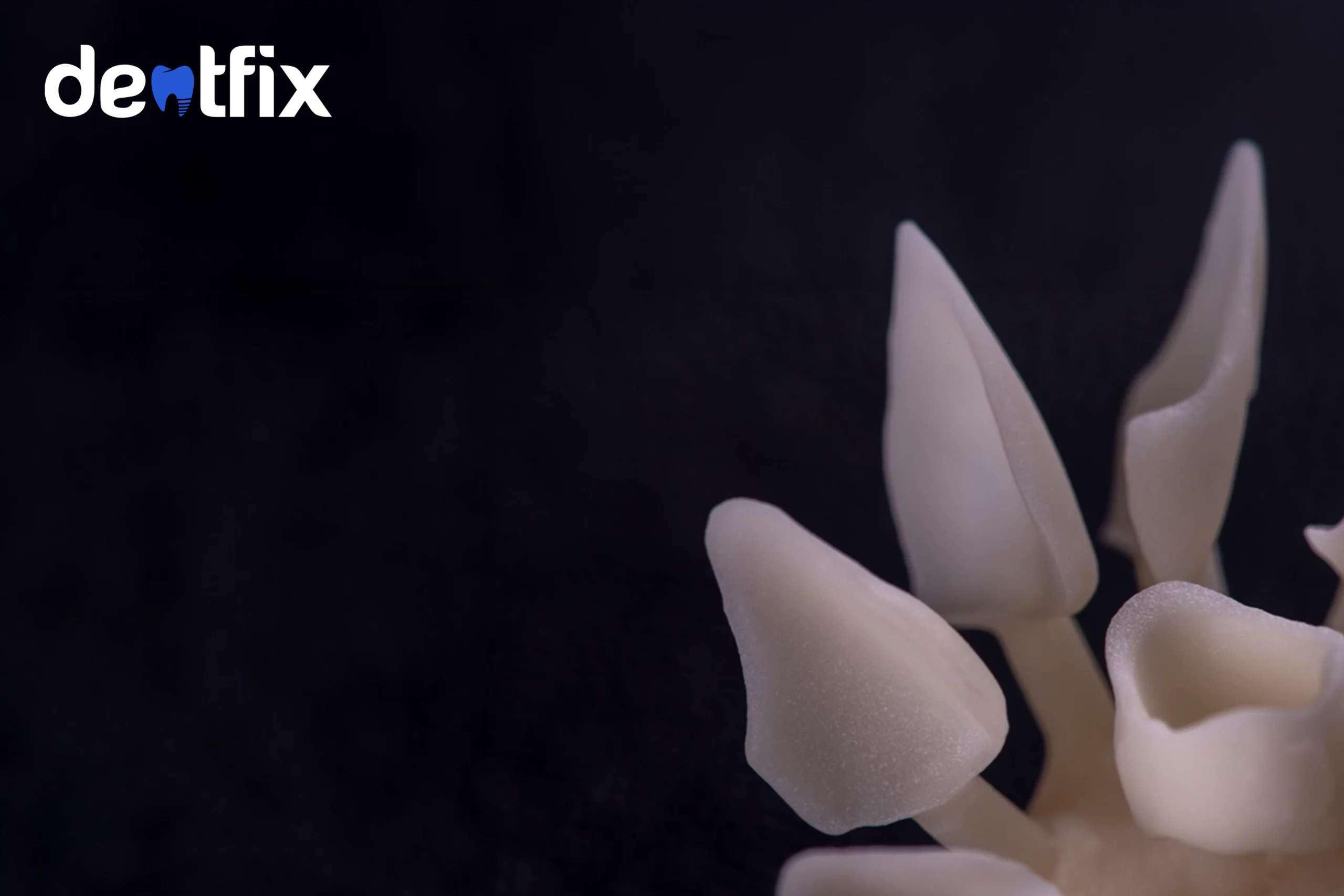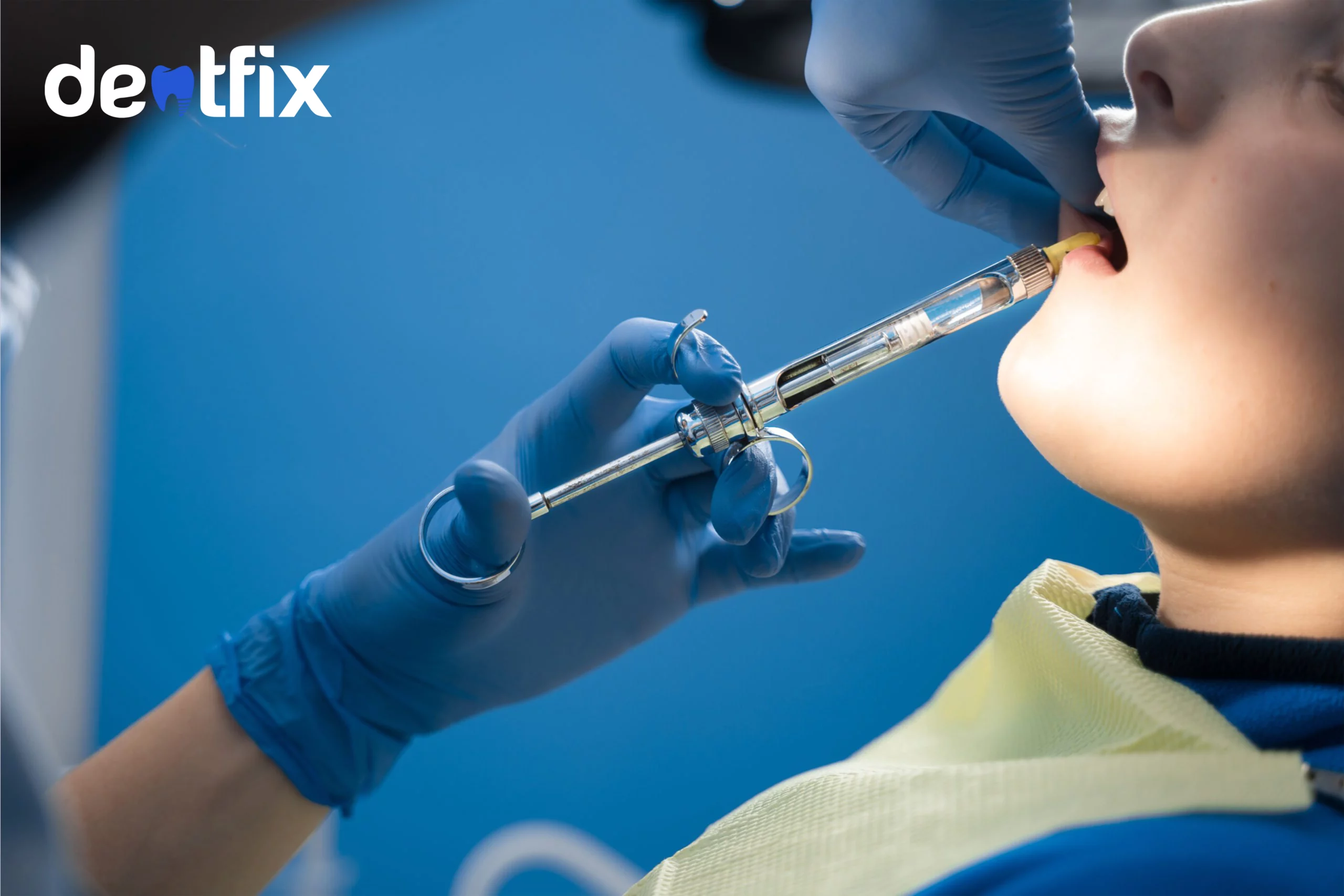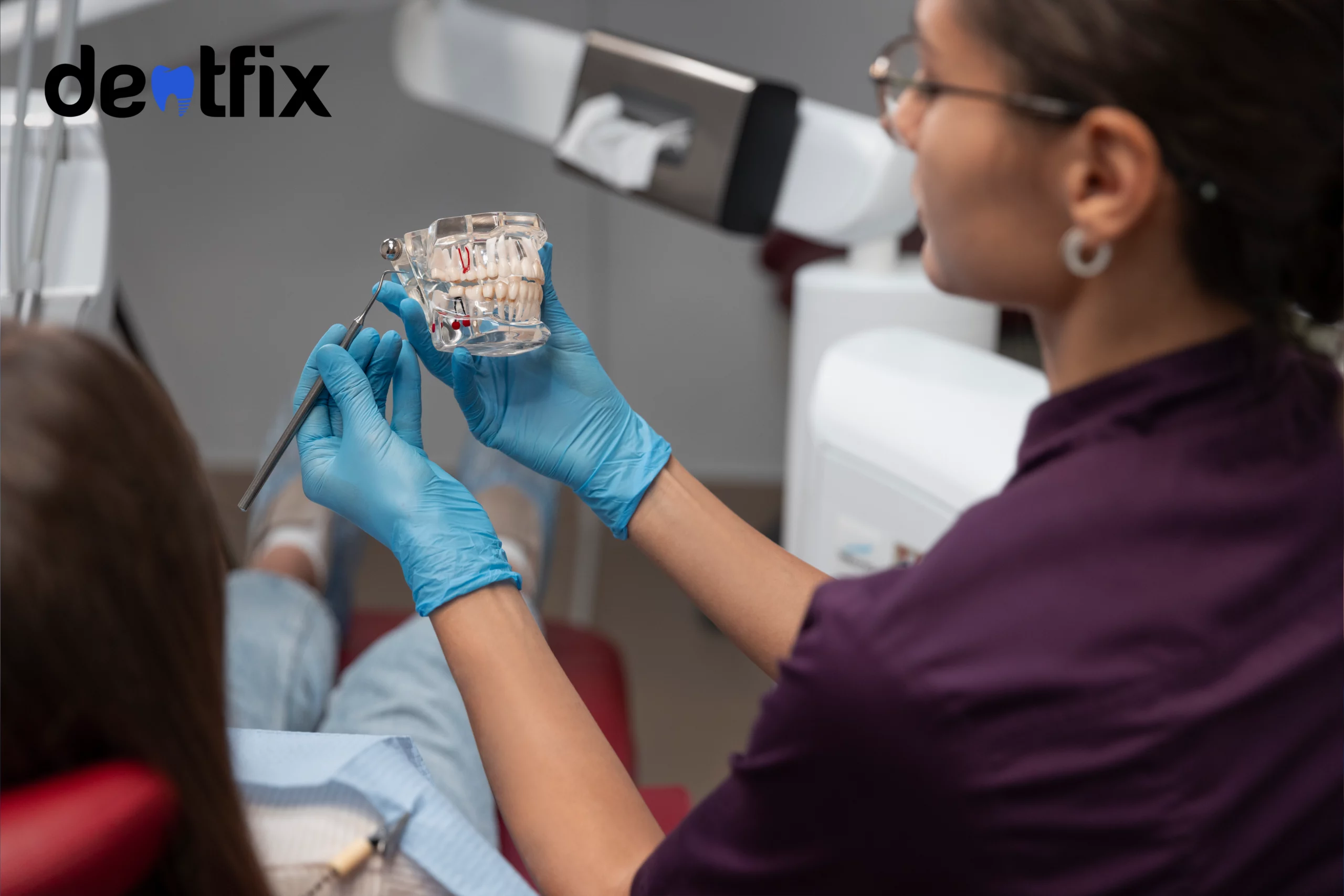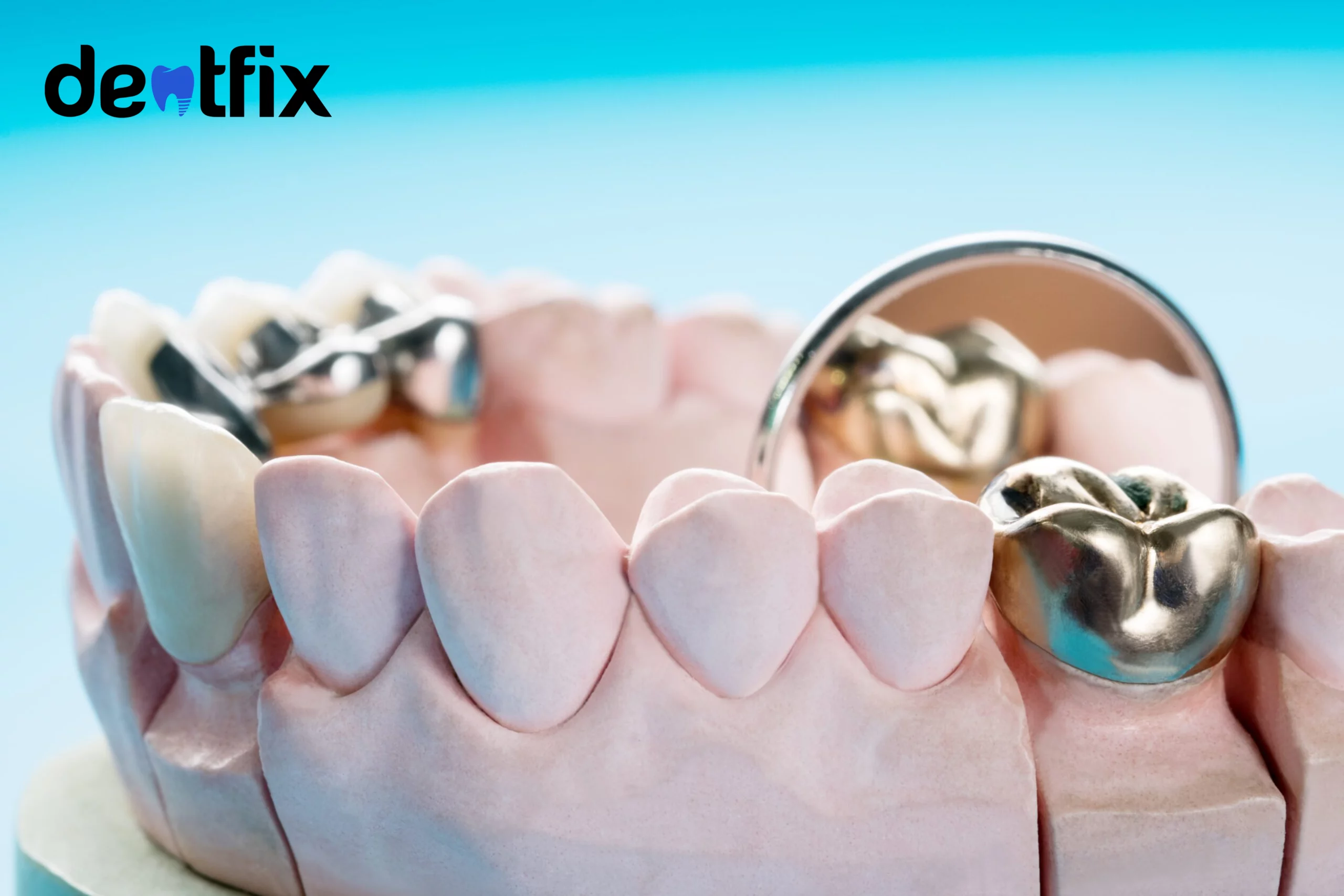This is the second step of your 4 parts journey into the complete guide on deep cleaning.
So at one of your regular visits to the dentist, they suggested deep teeth cleaning to you. But what does it mean? Should you be worried? Not really! You should actually be happy!
During a deep cleaning procedure, your dentist or dental hygienist would clean out all the tartar and buildup of plaque from your teeth and gum line.
Dentist deep cleaning procedure is one of the easiest treatments compared to some other dental treatments and can help with your overall oral health. We will give you all the necessary information so you know what to expect during your deep cleaning appointments at the dentist.
Deep cleaning dental procedure: stages & treatment plan
A deep cleaning dental procedure is also known as gum scaling and root planing. Gum scaling is the first step when the dentist cleans out the accumulation of plaque from your teeth, gum line, and gum pockets. They use scalers and ultrasonic scalers to remove plaque and calcifications from those parts.
The scaler is used manually and your dentist uses it to scrape off the plaque and tartar buildup on your teeth. In some places, if the buildup is too dense they would switch to an ultrasonic scaler which uses vibrations and pressurized water to remove the calcified plaque.
After this step, we have root planing. During the cleaning part, the dentist gets rid of the bacteria in the gum pockets. This causes the gums to feel loose on your teeth, but it won’t be for too long. Your dentist makes sure that all the bacteria are gone and your teeth’s root surfaces are smooth. This helps the gums to reattach themselves to your teeth.
Step 1: Diagnosing gum disease
Now you might be thinking about going for deep teeth cleaning procedure. Before doing so talk with your dentist and let them come up with a suitable plan for your teeth and dental issues.
The first thing to have in mind is gum disease. Your dentist will check for signs of gum disease and based on that will decide on a periodontal treatment plan. Your dentist will check how deep your periodontal pockets are. If the dental pockets are less than 4 millimeters deep they are considered normal and do not require immediate attention. But if the pocket depth is more than 4 millimeters you are in need of a dentist deep cleaning procedure. Based on the classification of gum disease your dentist will decide if you need deep cleaning or any additional treatments.
First stage: gingivitis
It is a mild form of periodontal disease and the symptoms include redness, swelling, and irritation. Gingivitis affects the part of the gum tissue surrounding the root of your teeth which is called gingiva. Even though it is not that serious, it is important to take care of this dental issue as soon as possible.
Second stage: periodontitis
Periodontitis is a more advanced gum disease that involves bacterial infection and if not taken care of can lead to tooth loss in severe cases. Symptoms include red and puffy gums, spitting blood, and gum recession which means the gum tissue pulls away from the teeth.
Third stage: advanced periodontitis
It happens when the previous stages of gum disease are not treated. The symptoms of advanced periodontitis are excessive gum recession, bad breath due to severe infection, loose teeth, and bone loss.
Now that we are familiar with these periodontal diseases let’s see the treatments.
Step 2: Preparing a treatment plan
Your treatment plan can have both nonsurgical and surgical treatments. In advanced stages of periodontitis, you might need periodontal surgery to achieve gum health. In order for your dentist to be able to check your teeth and gums, they might do some dental X-rays. Your dentist will check for bone loss and bacteria in gum pockets. Also, accurate pocket depths are helpful to determine the advancement of gum disease. After all of these we will move on to treatments which are:
Deep cleaning: Scaling and root planing
Deep cleaning consists of two main processes called scaling and root planing. Cleaning and scraping off the plaque and calculus build-up on the teeth is the first step to gum disease treatment.
Scaling: The dentist will use scalers and ultrasonic scalers interchangeably to clean and prepare the teeth and gums for the other stages of treatment.
- Scaler: A dental device used in periodontal scaling that the dentist uses manually to scrape off the plaque from the surface of your teeth. It has a narrow end so it can easily reach between the teeth and deeper gum pockets to clear out the tartar and plaque.
- Ultrasonic scaler: This is a kind of scaler that vibrates and shoots out pressurized water to remove tartar and plaque forms from your teeth.
Root planing: After scaling your dentist will smooth the teeth’ roots. This means they will clean and remove all the residues of tartar and plaque buildup from the root surfaces. This helps your gum tissue to reattach itself to the teeth, and there won’t be any gum recession.
But what if you have aggressive gum disease and a simple dentist deep cleaning procedure won’t cut it? In that case, based on your dentist’s diagnosis you might need one of these surgical treatments.
Gum grafting
In advanced gum disease cases with too much gum recession, gum grafting surgery could be a great treatment. In this surgical procedure, a piece of skin is taken either from the roof of your mouth or the gum’s healthy parts to cover up the roots of teeth.
Bone grafting
When the gum disease gets too advanced there is a chance of bone loss. If there is a severe bone loss you will need a bone graft. The bone graft is placed to add support to your teeth so they wouldn’t fall out.
So if your dentist comes up with any of these treatments for gum disease don’t be alarmed. Try to communicate with them and ask any questions you have so you will feel more comfortable with your treatment plan.
How long does a deep cleaning take?
A regular deep cleaning appointment usually takes about 45 to 60 minutes. This is not the only appointment. For your dentist, a deep cleaning procedure takes two dental appointments. They only clean half of your mouth per appointment. These two separate visits are usually either a day or a couple of weeks apart.
Can it be done in one day?
The whole deep cleaning process is not that painful, but it does take time. During the scaling and root planing procedure your gums and teeth would go through a lot of scraping and cleaning. Your teeth will feel sensitive and your gums will bleed a bit. These are normal, but imagine your whole mouth, teeth, and gums all tender and sensitive. As we have mentioned before, teeth sensitivity would last for a week or so. During that time your whole upper and lower teeth will be sensitive and that will make eating and drinking really difficult.
As for time the full-mouth, deep cleaning will take about 3 to 4 hours. For all these reasons not only dentists but also patients usually prefer to get it done in two appointments rather than one.
How often should I go for a deep cleaning?
This mainly depends on the dental health of the patient, but dentists usually recommend getting teeth deep cleaned every 6 months. For patients with periodontal issues, the dentist might recommend a more frequent treatment plan.
Talk with your dentist to be sure to get the treatment plan suitable for your situation.
What to do before a deep cleaning?
Since the whole deep cleaning treatment is partly invasive, it does not require much preparation. Dental professionals will not ask you to do anything particular before the procedure, but here are some things you can do to be ready.
First off clean your teeth and mouth before you go. Due to the probing that the dentist does with a scaler, there is a chance of little cuts in your gums, and the fewer bacteria present in your mouth the better. We don’t want those bacteria in our bloodstream. Some dentists might prescribe antibiotics after the procedure but in most cases, it won’t be necessary. Now just go to your dental cleaning appointment and good luck!
Can you do it before the teeth whitening process?
Yes! It is actually recommended by dental professionals to book an appointment to get your teeth deep cleaned before you go for your teeth whitening appointment. Deep cleaning gets rid of all those nasty tartar buildup and colonies of bacteria in your entire mouth. This gives your dentist a better start for the teeth whitening process. Your dentist will also polish your teeth to make them look cleaner and stain-free after the procedure.
If you are wondering whether you can get deep teeth cleaning and teeth whitening at the same time or not the good news is of course you can! So you won’t be needing separate visits to your dentist’s office.
What to expect after a deep cleaning of teeth?
The first thing to expect after a deep cleaning of teeth is tooth sensitivity. This is normal and it lingers for a few days. Other than that, your teeth will feel smoother to the touch. You can feel it if you run your tongue on them.
Another thing that you might notice is that your teeth look longer after deep cleaning. This is because of empty periodontal pockets. During root planing, the dentist pushes the gums back in order to reach the deep pockets and clean them thoroughly. In most cases, this resolves by itself and the gum tissue moves back to its normal place.
Another expectation is the teeth’ color. After getting the deep cleaning procedure you will notice your teeth look whiter and less yellow. This is because of the removal of plaque and tartar. Speaking of color your gums will start looking pinker and less red after a couple of days. This shows that your gums are healthy.
What to eat and not eat after a deep cleaning of teeth?
So, you might be thinking about how long to eat after deep teeth cleaning. The first thing to avoid is eating right after your procedure. You have to wait until the numbness or anesthesia wears off. If you eat while you are still numb or under the influence of anesthesia there is a higher chance for you to bite your cheek or tongue. Not only it is painful it can also lead to infection. Who wants that? So wait for a couple of hours until your numbness or anesthesia wears off completely.
As we mentioned above a bit of sensitivity in your teeth and gums is normal after the deep teeth-cleaning process. So it is best to avoid eating:
- Hard foods: apples, steak, etc.
- Acidic foods: tomatoes, lemons, grapefruit, oranges, etc.
- Sticky and chewy foods: chips, chewing gums, popcorn, nuts, etc.
Foods that would be easier for you to eat are soft and easy to chew and swallow such as:
- Cooked pasta
- Cooked fluffy rice
- Banana
- Eggs
- Mashed potato
Keep yourself hydrated during your recovery and follow these recommendations so you can handle your sensitive teeth better and have less irritation.
How long are teeth sensitive after deep cleaning?
Tooth sensitivity is unavoidable after a deep clean. But how long will it last? Your teeth and gums will usually be sensitive for at least a week after the deep dental cleaning. But don’t worry, It is time for aftercare! Aftercare not only helps with your healing but ensures that your teeth stay healthier for longer.
What is the deep cleaning aftercare process?
So you are done with your deep cleaning process, but that’s not all. Deep cleaning teeth aftercare is as important as the previous part. Your dentist will give you instructions on what to do and how to take care of your teeth after your deep teeth cleaning process. You require aftercare until the numbness and bleeding go away.
| Problem | How to take care of it |
| Gum pain after the procedure | Over-the-counter pain reliever |
| Inflammation and bleeding | Warm salt-water mouth rinse |
| Infection | Prescription antibiotics |
We’re sorry to say, but deep cleaning hurts. Well after the numbness wears off, you might feel a bit of pain and discomfort which is totally normal. To avoid that, you can take over-the-counter pain medications to help you manage the pain. On the same note, your dentist might prescribe some antibiotics as well. Make sure to take them as instructed to avoid any infections.
Remember to keep up with your usual oral hygiene routine. Brushing your teeth twice a day and flossing should not be forgotten. Good oral care helps with recovery and helps maintain the results of your deep cleaning for longer. It is a good idea to add an antimicrobial mouth rinse or warm saltwater solution to your routine to keep the bad bacteria away. Use the rinse a couple of times a day or as would your dentist instructs you. As for brushing your teeth use a soft toothbrush and do not be rough when you are brushing them. Continue your regular oral hygiene routine to make sure your pearly whites are always sparkly.
All of these steps are for you to enjoy your pearly whites for longer. So if you have more questions or any concerns please don’t hesitate to contact us! Our medical assistants at Dentfix will get back to you as soon as possible.
Resources:
-Ower, P., Minimally-Invasive Non-Surgical Periodontal Therapy, Mag Online Library, May 2013; 40: 289–295
